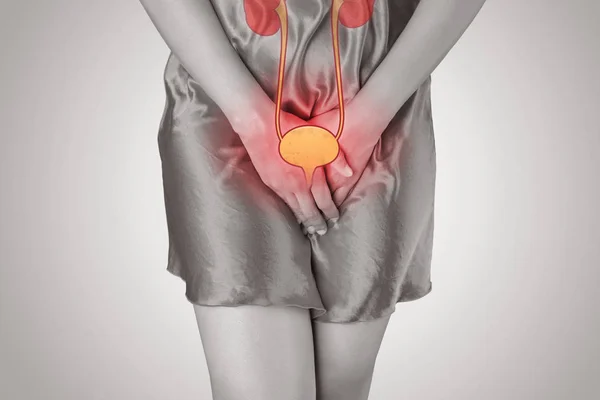Are you concerned about the potential link between sanitary pads and urinary tract infections (UTIs)? If you’re someone who experiences recurrent UTIs, it’s natural to wonder if your menstrual hygiene products could be contributing to the problem. In this article, we’ll explore the facts and myths surrounding the connection between sanitary pads and UTIs, and provide you with helpful insights to make informed decisions about your urinary tract health.
Contents
Can Sanitary Pads Cause UTI?

Yes, sanitary pads can increase the risk of UTIs (urinary tract infections) for several reasons:
1. Trapping moisture and heat: Sanitary pads absorb menstrual blood and discharge, which can create a warm, moist environment around the urethra. This is an ideal breeding ground for bacteria, which can then enter the urinary tract and cause an infection.
2. Irritating the urethra: The adhesive or fragrance on some pads can irritate the urethra, making it more susceptible to infection.
3. Not changing pads frequently enough: Wearing a pad for too long allows bacteria to grow and multiply, increasing the risk of a UTI.
4. Using pads with fragrances or dyes: Some pads contain fragrances or dyes that can irritate the delicate skin around the urethra and vulva, making them more susceptible to infection.
5. Wearing pads during sexual activity: Friction from sexual activity can push bacteria into the urethra, and wearing a pad can create a warm, moist environment that encourages bacterial growth.
How Sanitary Pads can Contribute to UTI?

1. Chemicals in Sanitary Pads
One factor to consider regarding the potential link between sanitary pads and UTIs is the presence of chemicals in these products. While the level of chemicals in most menstrual products is typically low, some studies have suggested that certain chemicals, such as fragrance, may be present. However, it’s important to note that these chemicals are unlikely to directly cause UTIs.
2. Irritation and Allergic Reactions
Another way sanitary pads can contribute to UTI risk is through irritation and allergic reactions. Some people may have sensitive skin and may react to the adhesive or materials used in certain types of pads. Prolonged exposure to moisture from menstrual blood or sweat can also cause irritation and lead to a rash. This can create an environment that promotes bacterial growth, increasing the likelihood of a UTI.
3. Trapping of Moisture
Sanitary pads are designed to absorb menstrual flow, but if not changed regularly, they can trap more heat and moisture than just underwear alone. This environment promotes bacterial growth, which can increase the risk of getting a UTI. It’s crucial to change pads frequently to ensure that moisture and bacteria are not allowed to build up. Opting for breathable materials may also help minimize the risk of UTIs by allowing better airflow and reducing the chances of moisture being trapped.
Tips for Preventing UTI while Using Sanitary Pads
While sanitary pads are a convenient and popular menstrual hygiene product, they can increase your risk of developing a urinary tract infection (UTI). Here are some tips to help you prevent a UTI while using sanitary pads:
1. Change your pad frequently.
- Aim to change your pad every 4-6 hours, or more often if you have a heavy flow.
- Leaving a pad on for too long can create a warm, moist environment that encourages bacterial growth.
2. Choose pads without fragrances or dyes.
- Look for pads that are unscented and dye-free.
- Fragrances and dyes can irritate the delicate skin around the urethra and vulva, making them more susceptible to infection.
3. Wear cotton underwear.
- Cotton is breathable and helps to wick away moisture.
- This can help to prevent the area around your urethra from becoming too warm and moist.
4. Wipe from front to back.
- This helps to prevent bacteria from entering the urethra from the anus.
5. Drink plenty of fluids.
- Aim to drink 8-10 glasses of water per day.
- This helps to flush out bacteria from the urinary tract.
6. Urinate after sexual activity.
- This helps to remove bacteria from the urethra.
7. Consider using a menstrual cup or period underwear.
- Menstrual cups and period underwear are reusable options that can help to reduce the risk of UTIs.
- These options collect menstrual blood instead of absorbing it, which can help to keep the area around the urethra drier.
8. See a doctor if you experience any symptoms of a UTI.
- These can include burning or pain when urinating, frequent urination, blood in the urine, and pelvic pain.
- Early diagnosis and treatment are important to prevent complications from a UTI.
Conclusion
By following these simple tips, you can significantly reduce the risk of developing urinary tract infections (UTIs) while using sanitary pads. By prioritizing your health and practicing these tips, you can ensure a comfortable and worry-free experience during your menstrual cycle. So, take care of yourself, choose the right pad, and maintain good hygiene to stay UTI-free.
Frequently Asked Questions
How long does it take for a UTI to go away?
Acute UTI: three to seven days of antibiotics. Complicated UTI: seven to 14 days of antibiotics; a complicated UTI is an infection that has spread beyond the bladder. Acute UTI in pregnant patients: 7 seven to 14 days of antibiotics.
Can you get UTI from pads?
Yes, using pads can increase the risk of UTIs. Pads can trap heat and moisture, creating an environment for bacterial growth. It’s important to change pads regularly to minimize this risk.
Why do I get UTIs after my period?
UTIs can occur after your period due to the use of feminine health products like pads and tampons. These products can hold and spread bacteria, especially in a moist and warm environment. Changing underwear frequently is also important to prevent UTIs.
I am a medical student with experience and interest in Women’s health and well-being.